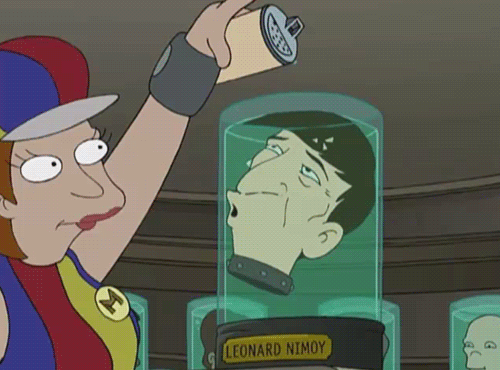Where do they get these people?
Mad scientists do exist 
At least one Italian scientist is completely and totally serious that head transplants on humans might soon be possible. How the hell?
In a new paper, Dr Sergio Canavero, a member of the Turin Neuromodulation group, discusses how scientists have been experimenting with head transplants on animals for more than 40 years. But these doctors Frankenstein haven’t ever been able to complete the final step of connecting the spinal cord of one subject to the spinal cord of the other. Canavero thinks he’s found a solution:
The greatest technical hurdle to [a head transplant] is of course the reconnection of the donor’s (D)’s and recipients (R)’s spinal cords. It is my contention that the technology only now exists for such linkage…. [S]everal up to now hopeless medical connections might benefit from such a procedure.
A head transplant — not to be confused with the equally crazy brain transplant — involves decapitating a head and reattaching it to a donor body. Hypothetically, it’s a solution for quadriplegics experiencing widespread organ failure. It’s not going to help those people walk again, but say their bodies were failing them and their brains were still functioning? A head transplant would be a last resort.
Canavero uses the example of Case Western Reserve scientist Robert White to make his case. In 1970, White completed a head transplant with Rhesus monkeys. It was mostly successful — the recipient monkey was able to hear, taste, smell and see, and it survived for a while after the operation was complete.
But the procedure is incredible risky. Both patients have to be in the same operating room, and the head being transplanted has to be cooled to between 13C and 15C. The donor body must also be chilled and placed under cardiac arrest. Surgeons must move fast to attach the head, and once that’s done, the donor body’s heart can be restarted, and the rest of the body’s systems revived. In summary, you have to be killed and chilled in order for a head transplant to happen.
The final step is the all-important spinal cord reconnection. This step has never even been attempted, so this is very, very theoretical. But Canavero cites an experiment from last week from Case Western Reserve and the Cleveland Clinic where scientists were able to sever and reattach the spinal cord in rats with moderate success. The rats were able to urinate again, but they couldn’t walk successfully. Canavero says this is possible in humans, by cutting cords with a super sharp knife then mechanically connecting the spinal cord of one person to the spinal cord of the other, fusing them together using a plastic, like polyethylene glycol.
Obviously this is all hypothetical. Very, very hypothetical. And there are plenty of ethical issues that come into question. But who knew Frankenstein had any basis in reality?
In a new paper, Dr Sergio Canavero, a member of the Turin Neuromodulation group, discusses how scientists have been experimenting with head transplants on animals for more than 40 years. But these doctors Frankenstein haven’t ever been able to complete the final step of connecting the spinal cord of one subject to the spinal cord of the other. Canavero thinks he’s found a solution:
The greatest technical hurdle to [a head transplant] is of course the reconnection of the donor’s (D)’s and recipients (R)’s spinal cords. It is my contention that the technology only now exists for such linkage…. [S]everal up to now hopeless medical connections might benefit from such a procedure.
A head transplant — not to be confused with the equally crazy brain transplant — involves decapitating a head and reattaching it to a donor body. Hypothetically, it’s a solution for quadriplegics experiencing widespread organ failure. It’s not going to help those people walk again, but say their bodies were failing them and their brains were still functioning? A head transplant would be a last resort.
Canavero uses the example of Case Western Reserve scientist Robert White to make his case. In 1970, White completed a head transplant with Rhesus monkeys. It was mostly successful — the recipient monkey was able to hear, taste, smell and see, and it survived for a while after the operation was complete.
But the procedure is incredible risky. Both patients have to be in the same operating room, and the head being transplanted has to be cooled to between 13C and 15C. The donor body must also be chilled and placed under cardiac arrest. Surgeons must move fast to attach the head, and once that’s done, the donor body’s heart can be restarted, and the rest of the body’s systems revived. In summary, you have to be killed and chilled in order for a head transplant to happen.
The final step is the all-important spinal cord reconnection. This step has never even been attempted, so this is very, very theoretical. But Canavero cites an experiment from last week from Case Western Reserve and the Cleveland Clinic where scientists were able to sever and reattach the spinal cord in rats with moderate success. The rats were able to urinate again, but they couldn’t walk successfully. Canavero says this is possible in humans, by cutting cords with a super sharp knife then mechanically connecting the spinal cord of one person to the spinal cord of the other, fusing them together using a plastic, like polyethylene glycol.
Obviously this is all hypothetical. Very, very hypothetical. And there are plenty of ethical issues that come into question. But who knew Frankenstein had any basis in reality?







Comment